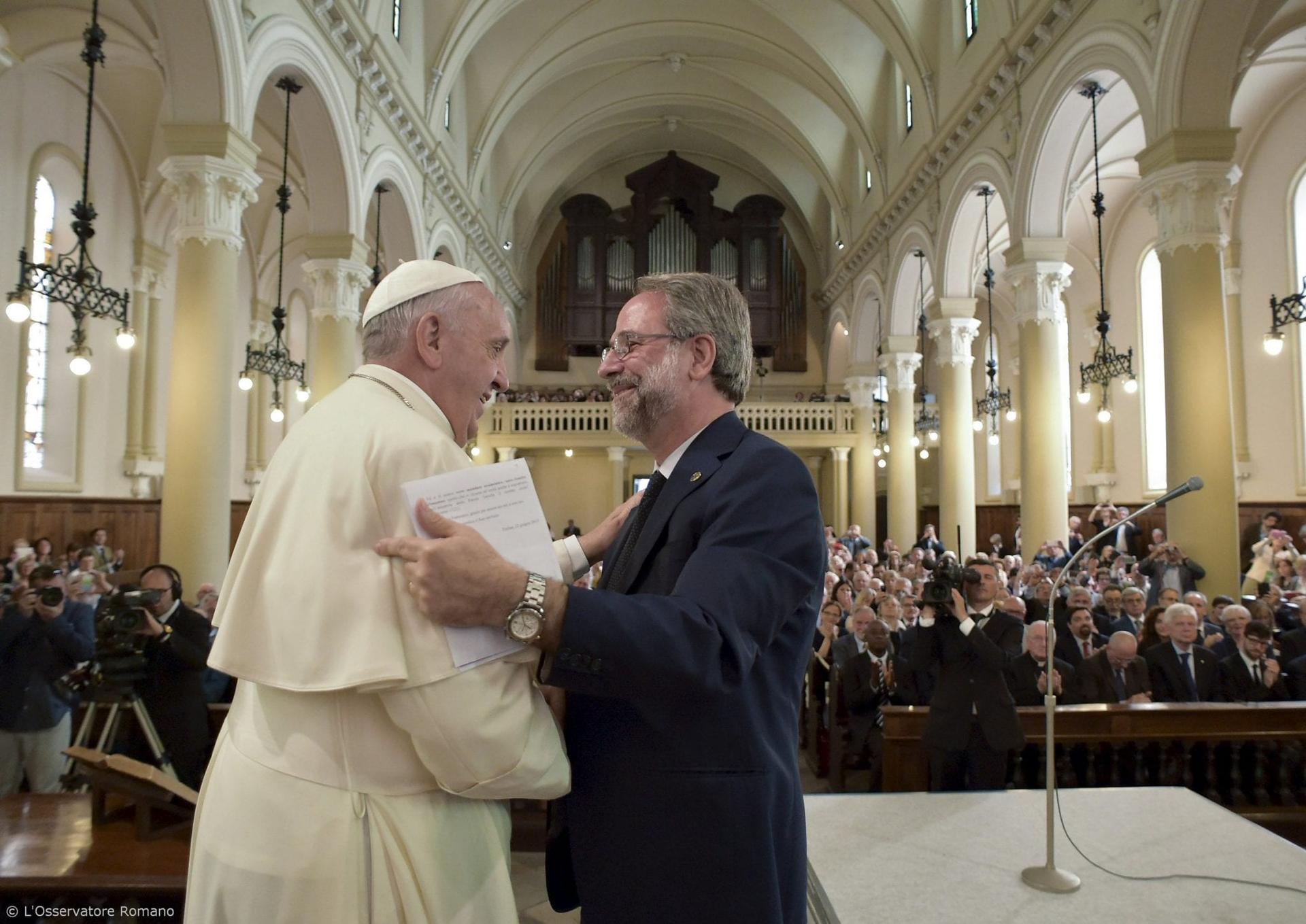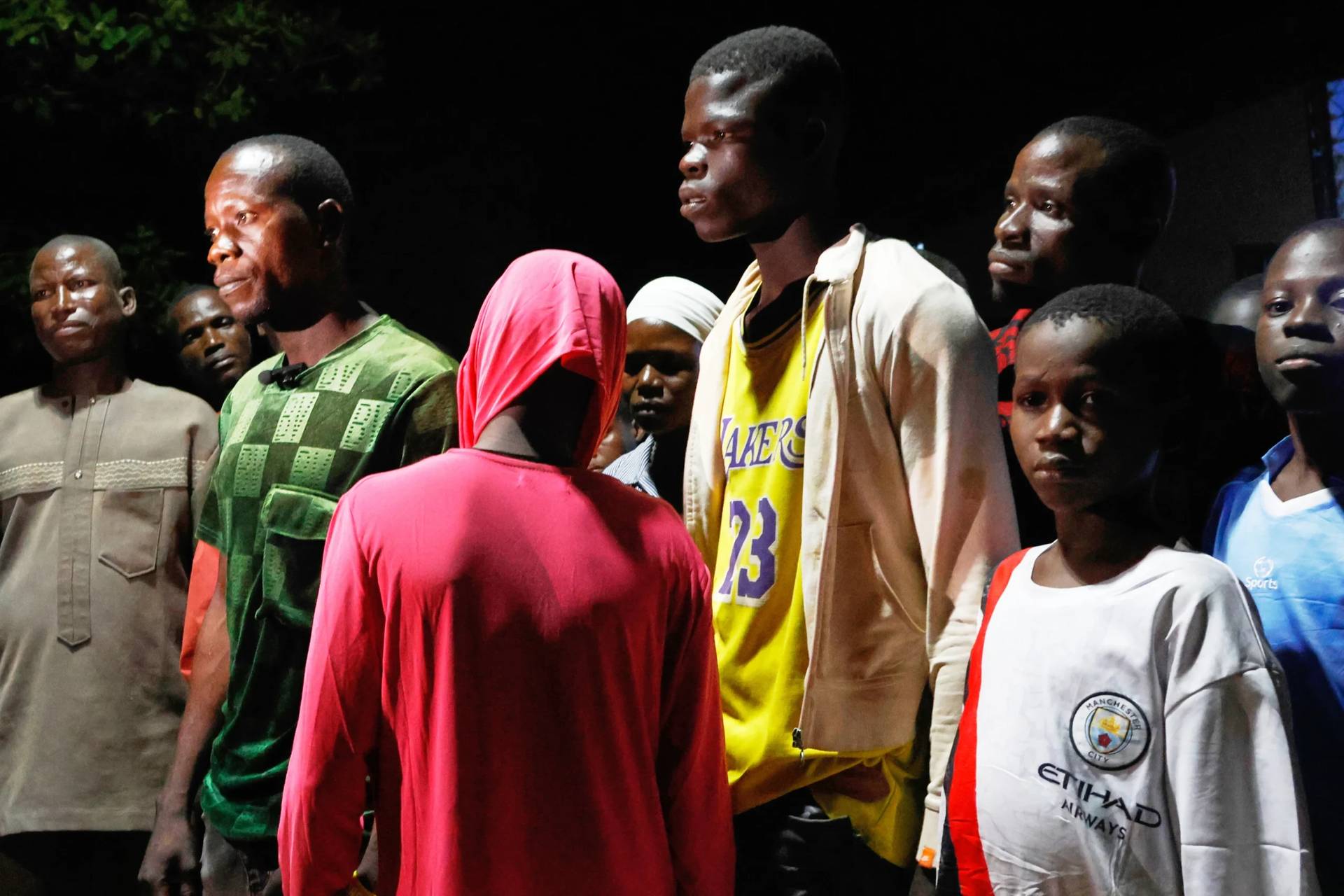ROME – Anyone who’s ever visited the Waldensian temple in Rome, or even just walked by it in the Piazza Cavour near the massive erstwhile papal castle of Sant’Angelo, has to be amused by the plucky façade above the front door.
Since 1914, the entrance to this tiny Protestant campsite in a vast Catholic forest has displayed a tongue-in-cheek commentary on its environment: A single flickering candle atop a Bible with the Latin phrase Lux Lucet in Tenebris, meaning, “A light shines in the darkness.”
(Naturally, construction of the temple was funded by an American Protestant, Emma Baker Kennedy, the wife of an early 20th century railroad tycoon.)
The Waldensians trace their origins to a 12th century merchant from Lyon, France, named Peter Waldo, who rejected much of the teaching and practice of the Catholic Church, including the doctrine of transubstantiation and the clerical system. Eventually driven out of Lyon and condemned by the papacy, Waldo’s followers settled in the Alpine valleys of northern Italy, mostly in the Piedmont region, to escape periodic bouts of persecution.
Today the Waldensians are considered proto-Protestants, one of the early tremors of the earthquake triggered by Martin Luther four centuries later. In 1975, they came together with Italy’s Methodist Evangelical Church to form the “Union of Methodist and Waldensian Churches.”
Protestantism was born in a spirit of dissent from the papacy, and over the decades the Waldensian center in Rome (which also includes a theology faculty) has lived up to that heritage. Back in 1981, it was a rallying point for Italians upset by what they saw as clerical “interference” under Pope John Paul II in a national referendum on abortion rights. More recently, it’s been a center of the Gay Pride movement.
When I first arrived in Rome in the late 1990s, one of the first stories I covered was a conference staged by the rebel Catholic “We Are Church” movement, then riding high from the success of petition drives in Germany and Austria demanding reforms in the Catholic Church, including the elimination of mandatory celibacy for priests and the ordination of women.
Naturally, the event was held in the Waldensian temple. The Waldensians allow female clergy and, since 2010, bless same-sex unions. The church has also taken stands in favor of euthanasia and assisted suicide.
Four years ago, Pope Francis made a bold attempt to overcome the legacy of antagonism, becoming the first pontiff ever to enter a Waldensian temple while he was visiting Turin. There he was met by Pastor Eugenio Bernardini, someone he knew from Argentina, where Italian emigres have established a small Waldensian presence.
During the encounter, Francis issued an historic apology for past persecutions: “On behalf of the Catholic Church, I ask you for forgiveness for the unchristian and even inhuman attitudes and actions which we have done to you throughout history. In the name of the Lord Jesus Christ, forgive us!”
True to their spirit, the Waldensians thought about it and then, basically, said no.
The pope’s gesture, their synod wrote in a letter to Francis, while appreciated, “does not allow us to step in the place of those who testified with their blood or the other Protestants suffering for their faith, and to forgive you.”
That defiant ethos may help explain why, although there are fewer than 30,000 actual Waldensians in Italy, roughly 600,000 Italian taxpayers nevertheless choose to allocate a small portion of their income taxes earmarked for social assistance to programs run by the Waldensian church. In 2018, that translated into about $36 million in public funding for the church’s projects.
After all, there may be relatively few actual Protestants here, but there are plenty of Italians with axes to grind about centuries of theocracy and overweening clerical authority and who admire a little guy willing to buck the system.
As for Francis, the fact that his apology four years ago didn’t quite go down as expected doesn’t mean he’s throwing in the ecumenical towel.
This week, the Waldensian synod is again meeting in northern Italy, in Torre Pellice – long considered the church’s “capital” in the Piedmont valleys, located near Turin – and for the occasion, the pontiff dispatched a message released by the Vatican Sunday.
Francis wrote to say he wanted to express “my fraternal closeness and that of the entire Catholic Church.”
As he typically does, Francis pressed his case for an ecumenism of the here-and-now, not focused on past grievances and disputes but on common action in the present on shared humanitarian and social values.
“I unite myself to your prayer, also to ask the Lord for the consolidation of an ecumenical spirit among Christians as well as a growing communion between our churches,” the pope wrote. “We’re called to continue in our commitment to a path of reciprocal knowledge, understanding and collaboration, in order to give witness to Jesus and his Gospel of charity.”
“As disciples of Christ, we can offer common responses to the sufferings that afflict so many people, especially the poorest and weakest, thereby promoting justice and peace,” Francis told the Waldensians.
In some ways, the religious “other” in Rome itself has always been the toughest nut to crack for the papacy in both ecumenical and inter-faith terms. Rome’s Jewish community, for instance, informed by centuries of living under the papal thumb, has a tendency to be a bit more skeptical about Vatican overtures than some other Jewish groups.
Similarly, Italy’s tiny Protestant community understandably may be a bit more reluctant to forgive and forget than, say, Germany’s Lutherans, where historically they’ve often been the state church and able to give as good as they get.
It remains to be seen what Francis’s latest outreach may produce, though this week’s Waldensian synod is set to discuss the theme of ecumenism. One supposes that for now, the pontiff’s aim is simply to generate a bit more light, and a shade less darkness, in a relationship that’s often seen considerably more of the latter.

















